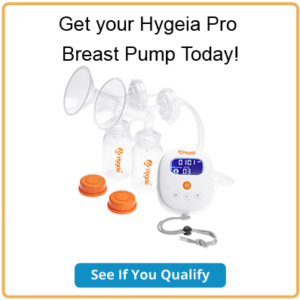 While many of us, as parents, would like to spend every waking moment with our little ones, it is necessary for most of us to leave our babies in the care of someone else for a period of time. It might be because we need to return to work and it might be because we simply need some moments away. Regardless of the reason, leaving our kids in the care of someone else (even someone you trust completely!) can be a bit stressful. There are a few things that can set us at ease. Feeling confident that our caregivers are well aware of how to feed a breastfed baby is key. Answering common questions such a how much a baby should consume, how to use a bottle, and how to tell if a baby is still hungry will set everyone at ease.
While many of us, as parents, would like to spend every waking moment with our little ones, it is necessary for most of us to leave our babies in the care of someone else for a period of time. It might be because we need to return to work and it might be because we simply need some moments away. Regardless of the reason, leaving our kids in the care of someone else (even someone you trust completely!) can be a bit stressful. There are a few things that can set us at ease. Feeling confident that our caregivers are well aware of how to feed a breastfed baby is key. Answering common questions such a how much a baby should consume, how to use a bottle, and how to tell if a baby is still hungry will set everyone at ease.
How Much Should I Give My Baby?
No one, in their right mind, would want to do anything but make sure a baby has absolutely everything that they need. We also highly treasure our breast milk so we don’t want to see it go to waste. How do we balance those two things and make sure that our little one is getting all the food they need while not having to put any extra milk down the drain?
Every baby is different. No magic formula (of the math variety, not the nutritional one!) is going to tell you exactly how much milk your baby is going to need on any given day. But, we do have some general guidelines for knowing how much a baby will require. For breastfed babies, we know that the milk volume that they consume ramps up in the first month and then stays pretty constant through the age of 6 months (unlike their formula fed counterparts). There have been a number of research studies that tell us that breastfed babies, on average, consume approximately 25 oz. per day between the first and sixth months. You can determine how much milk needs to be fed to a baby at any particular feeding by dividing the daily volume (25 oz. average) by the number of feedings per day. Kellymom.com has a great calculator to help you out with this! Remember, this is a rule of thumb and not a forged-in-stone amount. ALWAYS watch your baby to see how they are responding to the quantity of milk they are taking in.
Baby-Led Bottle Feeding
Many parents chose to give their babies breast milk through methods such as cups and syringes but most families choose to use a bottle. We know that the physical act of breastfeeding and the physical act of bottle feeding are simply different. My fellow International Board Certified Lactation Consultants (IBCLC) and I talk a lot about how to best feed a breastfed baby with a bottle so that it is “most like breastfeeding”. But, the reality is, bottle feeding will never be like breastfeeding but it can certainly be done in a way that allows the baby to feed in a way that is respectful to their bodies and their appetites. Teaching your caregivers these methods can make the feedings they give much easier for your breastfed baby.
Fleur Bickford, of Nurtured Child, shares some excellent tips on this technique. Don’t forget to check out her post for more important details!
- Hold your baby sitting upright, and start by placing the nipple of the bottle against your baby’s top lip. Wait for your baby to open up before putting the bottle in his mouth. Never force a bottle into a baby’s mouth.
- Your baby should be sitting up enough that the bottle is horizontal. Tip the bottle just enough to keep the tip of the nipple filled with milk.
- If you are supplementing a breastfed baby, it is beneficial to let your baby suck on the nipple for a minute or two without getting anything, and then tip the bottle so your baby is getting milk. By letting baby suck for a short while without getting anything from the bottle, you are mimicking the process at the breast, and it can help with the transition. There is no need to worry about your baby taking in air, one end or the other it will come back out!
- Watch your baby’s cues. During feeding, if your baby starts to show any signs of stress (splayed fingers and toes, milk spilling out of mouth, turning head away, pushing bottle away), then your baby needs a break. If your baby is showing signs that he is done (turning head, trying to push bottle away etc), then respect those cues and end the feeding.
- Alternate sides part way through the feeding to mimic breastfeeding and allow stimulation to both eyes and both sides of the body.
- Find a nipple that works well for your baby. There are no black and white answers as to which bottle nipple is “best” for a breastfed baby, because all babies are different. For more information, check out How to Bottle-feed as You’d Breastfeed and the website www.breastandbottlefeeding.com.
Every Time the Baby Cries, It Doesn’t Mean They’re Hungry
So, your loving care giver has determined an amount to give and given the bottle in a way that is respectful to the baby’s needs and yet, they are still fussy! Are they still hungry? It is the norm in our society to assume that more food = less fussiness but it simply isn’t true that more milk is always the answer. Encourage your care providers to also consider a number of options before deciding to give additional milk:
- Play with the baby for a few minutes. Often, it takes our bodies several minutes to register “I’m full”. Have your caregiver interact with the baby by talking, making faces, and engaging with noisemaker toys.
- Babies will often fill their diaper in the midst of a feed. Check to see if a change is needed.
- Especially if a caregiver has several children to watch, it might be tempting to lay the baby down to put them in a safe place alone. But humans are creatures who, especially in our early weeks, don’t like to be alone. I have a colleague who likes to remind me that, if the cavewoman would have laid her little one down on the ground in another part of the cave, that that baby wouldn’t survive long! ? Consider purchasing a baby carrier of some sort for your caregiver and thus allowing them to keep your baby close while tending to all of the rest of the children in their care.
Working together with your baby’s caregiver allow you all to give your little one what they need. Knowing how much milk to give, how to give it, and how to know whether more is needed are essential skills for everyone. So, hit the office or a dinner and movie with your spouse and know that your baby is in good hands.

